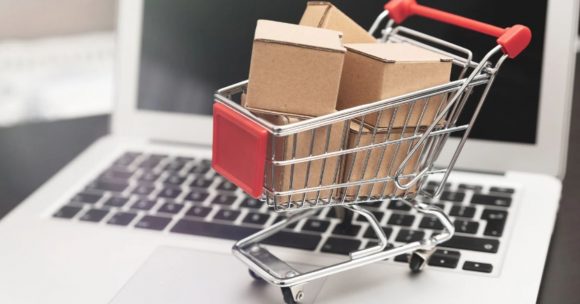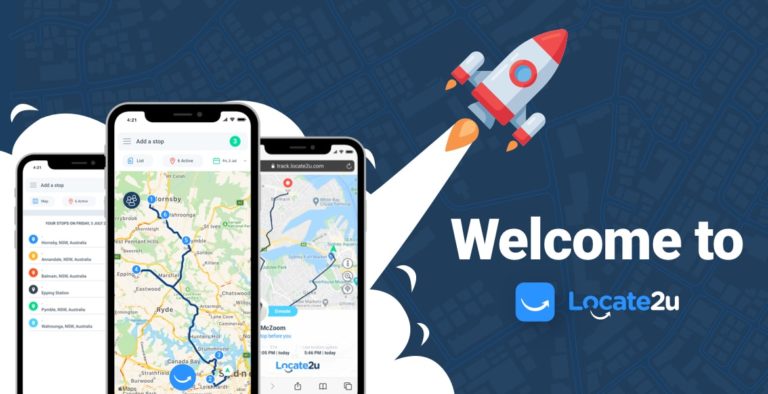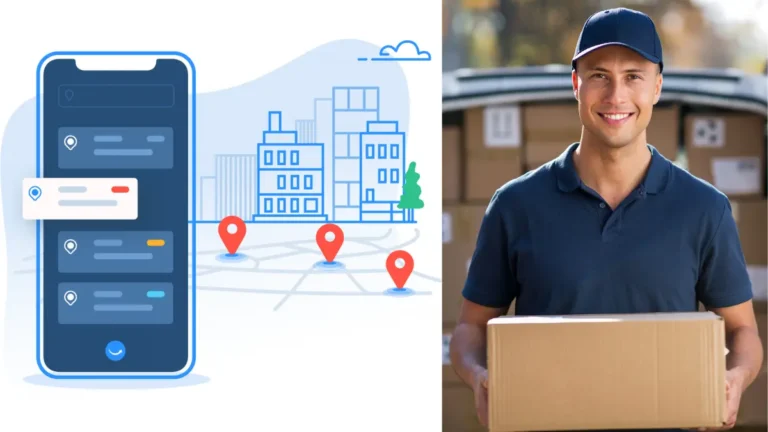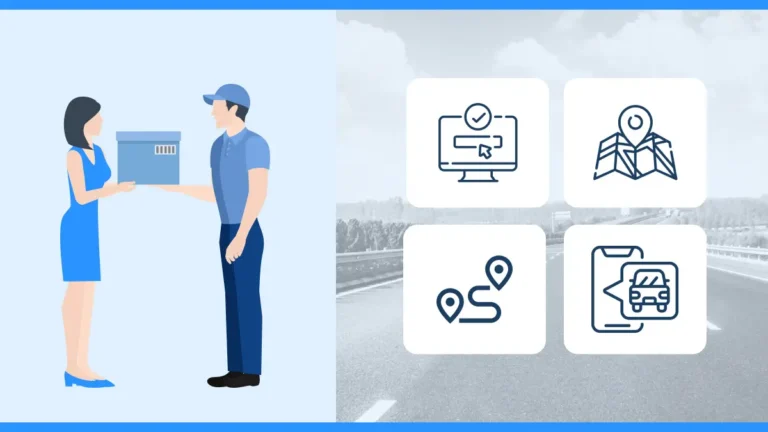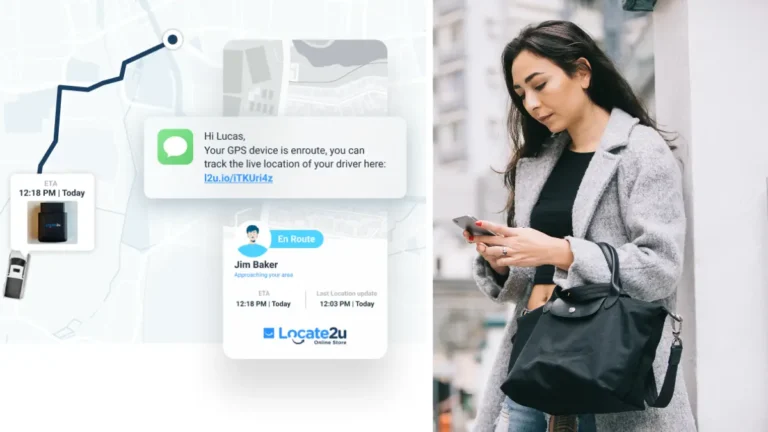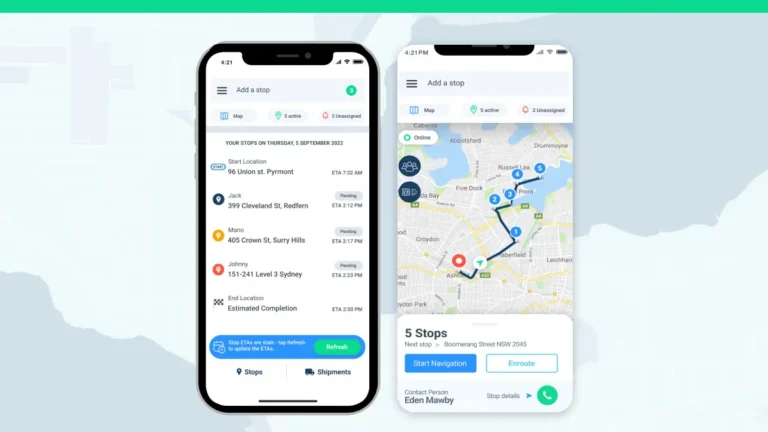In today’s modern digital world, ecommerce logistics has become the backbone of online retail. If you’re an online retailer or run an ecommerce business, mastering this important aspect is essential to staying competitive.
This comprehensive guide will explain the importance of ecommerce logistics, explore industry trends, and provide actionable tips to help you optimize your operations.
The evolution of ecommerce logistics
Electronic commerce logistics has evolved rapidly in response to the growing demand for online shopping. What was a simple process of shipping products from a warehouse to a customer has become a complex, technology-driven operation.
In recent years, the ecommerce logistics industry has experienced exponential growth, driven by the need for faster deliveries, the rise of automation, and the expansion of global trade.
What is ecommerce logistics?
Grand View Research explains that ecommerce logistics involves the provision of services such as warehousing, transportation, value-added services, and packaging services. Different ecommerce business models, such as B2C and B2B, have unique logistics requirements that must be addressed.
The demand for ecommerce logistics has increased across a wide range of applications due to:
- The growth of digital technologies.
- Increasing cross-border ecommerce.
- Rising number of internet users.
Trends shaping ecommerce logistics
Several key trends are shaping the future of ecommerce logistics. The rise of mobile devices has also significantly impacted ecommerce logistics, with more consumers making purchases via their smartphones.
Same day and next day delivery in online shopping
The expectation for rapid delivery of online purchases is no longer a luxury but a necessity. Logistics providers are increasingly adopting faster delivery models to meet consumer demands.
Automation and robotics
The integration of automation and robotics is making warehouses smarter, reducing human error and speeding up the fulfillment process.
Global expansion
As online retailers tap into international markets, cross-border logistics have become a focal point, requiring businesses to navigate complex regulations, taxes, and customs processes.
For business to business (B2B) transactions, navigating international logistics can be even more complex due to larger order values and recurring shipments.
Ecommerce logistics and parcel delivery
When it comes to ecommerce, parcel delivery is the heartbeat of the logistics operation, starting from the moment a customer places an order on your ecommerce website.
Picture this: A customer places an order on your ecommerce site, excitedly awaiting its arrival. If that parcel arrives late or damaged, it can result in a lost customer and a tarnished reputation.
To avoid this scenario: It is crucial to ensure your parcel delivery system is optimized for speed and reliability.
Companies are enhancing their ecommerce logistics by using advanced tracking systems and a vast global network to ensure parcels reach customers quickly and in perfect condition.
5 Ingredients for successful delivery
So you have decided to start your own online store to boost your online sales. You’re new to the online store business. You need to familiarize yourself with some important elements when it comes to delivery.
In his book titled Delivery, Australian delivery expert and founder of Zoom2u Technologies (ASX:Z2U) Steve Orenstein speaks of five key ingredients in the delivery process.
Speed
In today’s fast-paced world, speed is paramount. Customers expect quick deliveries, and companies that can provide this stand out from the competition.
“The best deliveries are speedy deliveries. Same day delivery (or next day, depending on the time the product is ordered) is what wows customers,” says Orenstein.
Choice
Offering customers choices in delivery options (e.g., standard, expedited, same day) allows them to select what best fits their needs.
“The customer needs the flexibility to choose a time window, and be confident that it will be delivered on the day and in the window they choose,” says Orenstein.
Communication
Keeping customers informed about their delivery status is vital. Real-time tracking and regular updates ensure customers know when to expect their parcels.
“The delivery drivers should be able to communicate with your customers if needed, and vice versa,” says Orenstein.
Problem solving
Issues can arise during delivery, such as wrong addresses or damaged goods. Having a robust problem-solving mechanism ensures these issues are resolved quickly and efficiently.
“If you can make sure that when there’s a problem the customer has the option to give feedback directly to you. You can fix it quickly and they are more likely to feel looked after than frustrated,” he says.
Real-world example: Amazon
Consider Amazon, a leading ecommerce company in logistics. Amazon has built an extensive logistics network, including fulfillment centers strategically located near major markets, enabling them to offer same day and even two-hour delivery in certain areas.
In Australia, Amazon is enjoying growth. The Australian Retail Outlook for 2024 (courtesy of Inside Retail and KPMG), explains that ecommerce remains a priority for many retailers with 31% of respondents saying growing online was a business priority for 2024.
The company’s use of cutting-edge technology, such as AI-driven inventory management and drone deliveries, ensures that it meets and exceeds customer expectations.
Amazon’s drone mission dates back to 2022. It has shown the world that making deliveries in less than 60 minutes is possible, thanks to a drone in the sky.
This initiative highlights the importance of optimizing last mile delivery to ensure packages are delivered accurately and efficiently to the final delivery destination.
Key features of drones
- Speed: Drones allow logistics companies to bypass peak traffic, especially in urban areas by optimizing delivery routes.
- Cost savings: They can cut fuel expenses. A company will also save on labor expenses because no ground vehicle is in use for a drop off.
- Accessibility: Drones can deliver to remote locations, including islands or disaster affected areas.
- Delivery vehicles: Scanning orders onto delivery vehicles updates the status for both sender and recipient, ensuring transparency and efficiency in the delivery process.
- Tracking: This modern technology gives customers real-time tracking which gives customers peace of mind.
Mastering ecommerce logistics: What you need to know
As an online retailer, understanding the intricacies of ecommerce logistics is vital for the success of ecommerce businesses. Here are some essential elements you need to consider:
Strategic fulfillment centers
Imagine your customer base is spread across multiple regions. You can drastically reduce delivery times and shipping costs by positioning fulfillment centers closer to these customers.
A well-placed network of fulfillment centers allows you to store inventory in key locations, ensuring that your products are always within reach of your customers.
Technology integration
Envision managing your logistics without the right technology. It would be like navigating a ship without a compass.
To stay competitive, you must integrate inventory management systems, real-time tracking, and route optimization software. These tools enable you to monitor your supply chain, optimize delivery routes, and give customers accurate delivery times.
Efficient returns management
Consider a scenario where a customer needs to return a product. If the return process is cumbersome, it could discourage them from shopping with you again.
Efficient returns management is crucial to maintaining customer satisfaction, especially when offering services online. Implementing a seamless return process, with clear communication and easy return options, can turn a potentially negative experience into a positive one.
How are industry experts helping achieve ecommerce brands with returns?
Logistics giant DHL Express has an international returns portal for its UK small and medium-sized enterprises (SME) customers. This portal, part of DHL Express Commerce, lets small businesses set up a branded returns process on their website quickly.
It is customizable, allowing ecommerce brands to set their own returns policies and terms, making it easy for shoppers to initiate returns and generate printable labels.
Here’s a scenario: Imagine a small UK-based online clothing store struggling with managing returns. Customers often face difficulties initiating returns, leading to frustration and lost sales. With DHL Express’s new international returns portal, the store quickly creates a branded, customizable returns process on its website.
Now, customers can easily start returns and print labels directly from the store’s site. This streamlined process boosts customer satisfaction and loyalty, helping small businesses thrive in a competitive market.
Proactive customer communication
Picture this: A customer places an order and then hears nothing until the package arrives. The uncertainty could lead to anxiety and dissatisfaction. Proactive communication is key to a positive customer experience.
Provide real-time updates on their order status, and let them know immediately if there are any delays. This transparency builds trust and keeps customers coming back.
Real-world example: Shopify and online marketplaces
Shopify is a prime example of how an ecommerce platform can simplify logistics for online retailers.
Through its Shopify Fulfillment Network, merchants can access a network of fulfillment centers across the US allowing them to offer faster, more reliable delivery options to their customers.
This network is supported by advanced technology that helps merchants manage inventory, track shipments, and optimize delivery routes.
Shopify also acquired ChannelApe, an inventory management platform. The company has labeled this a “major step forward” for customers.
What does ChanelApe do for ecommerce business?
ChannelApe is a strategic inventory operations platform designed for retail businesses. It consolidates inventory operations across sales, fulfillment, and inbound logistics into one centralized system.
The platform helps companies improve their margins, cash flows, and customer satisfaction by offering:
- Real-time data insights.
- Automated inventory management.
- Customizable order management rules.
ChannelApe enables seamless integration with other systems and provides tools to optimize fulfillment, reduce errors, and enhance overall operational efficiency.
Shopify keeps orders shipshape
Here’s one way Shofity is keeping customers happy. It offers spit shipments on checkout.
When a customer splits a shipment, they have the option to:
- Choose the lowest price.
- Choose the fastest delivery.
- Customize the shipping options.
How does this offering help merchants? The company’s CEO Harley Finkelstein says this feature gives merchants the ability to set clear expectations for their customers before purchase decisions are made, whether they prioritize fast delivery or low shipping costs, which in turn gives you a competitive edge.
ALSO READ: Holiday shopping starts mid-year: Shopify
The critical role of ecommerce logistics
Why has ecommerce logistics become so critical for an online business? The answer lies in its direct impact on customer satisfaction and business profitability.
In a competitive market, your logistics operations can be the difference between retaining a loyal customer or losing them to a competitor. Effective ecommerce logistics ensure that your products are delivered on time, in good condition, and with minimal cost.
Customer satisfaction
A smooth and reliable delivery process is essential to building customer loyalty. Customers who receive their orders quickly and without issues are more likely to become repeat buyers and recommend your business to others.
Cost efficiency in online retail sales
By optimizing your logistics operations, you can reduce costs associated with shipping, inventory management, and returns. These savings can be reinvested into other areas of your business, such as marketing or product development.
Competitive advantage
A robust logistics strategy in the crowded ecommerce marketplace can give you a significant edge. A robust logistics strategy can also help you effectively manage sales through online marketplaces. Retailers offering faster delivery times, better customer service, and more flexible return policies will stand out from the competition.
Let’s take a quick recap
Now that you have familiarized yourself with the ecommerce, Here’s a few takeaways from the guide to remind with a few pointers to conquer the ecommerce logistics space:
- Ecommerce logistics is not just a behind-the-scenes operation – it’s a critical component of your business strategy.
- When you stay informed about industry trends, invest in business improvements such as investing in technology, and prioritizing customer satisfaction, you can master ecommerce logistics and position your business for long-term success.
- Whether you’re an established retailer or just starting, understanding and optimizing your logistics operations will give you the competitive advantage needed to thrive in today’s ecommerce landscape.
Photo Credit: Canva – Returns graphic: DHL
About the author
Sharl is a qualified journalist. He has over 10 years’ experience in the media industry, including positions as an editor of a magazine and Business Editor of a daily newspaper. Sharl also has experience in logistics specifically operations, where he worked with global food aid organisations distributing food into Africa. Sharl enjoys writing business stories and human interest pieces.

